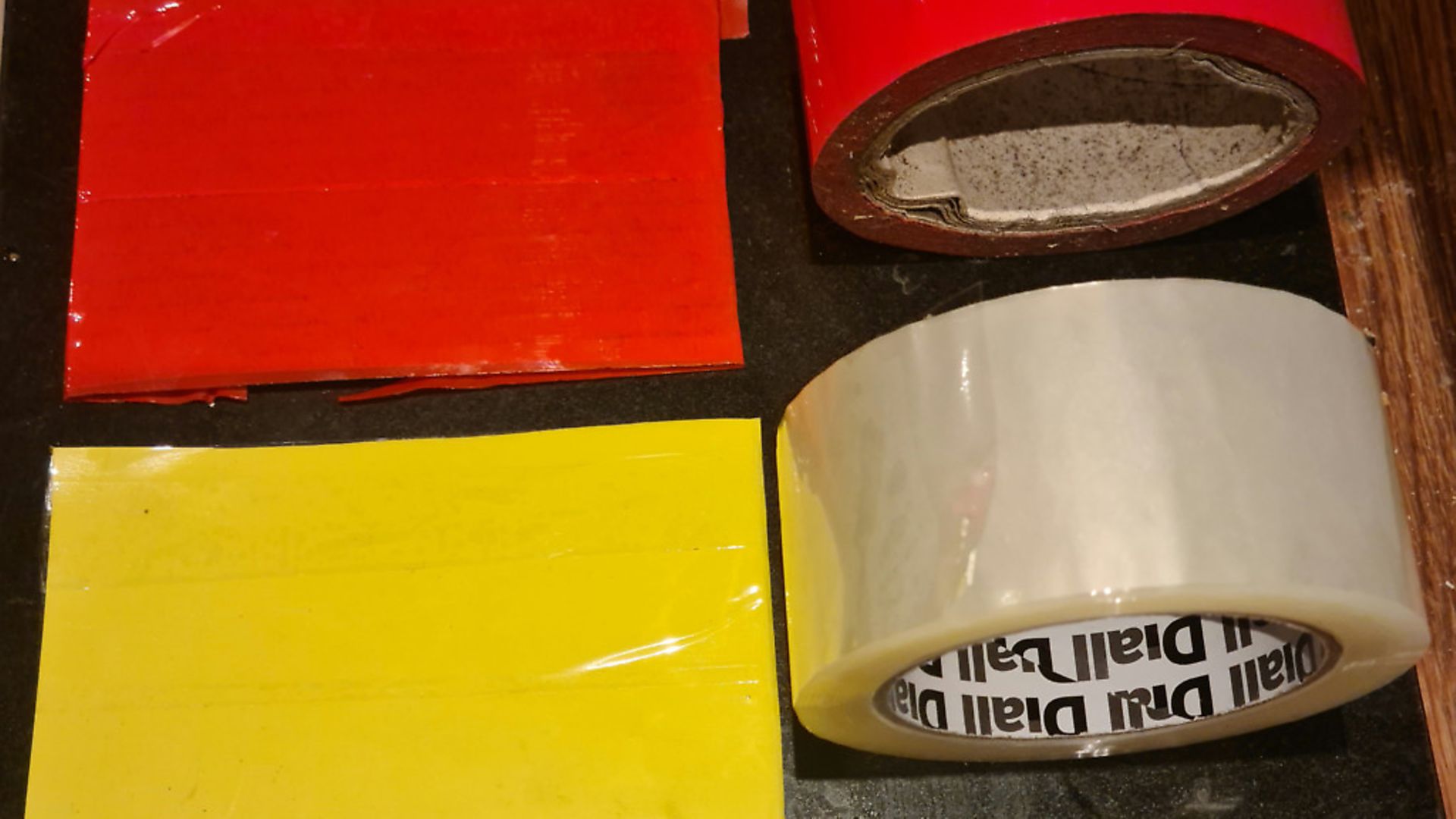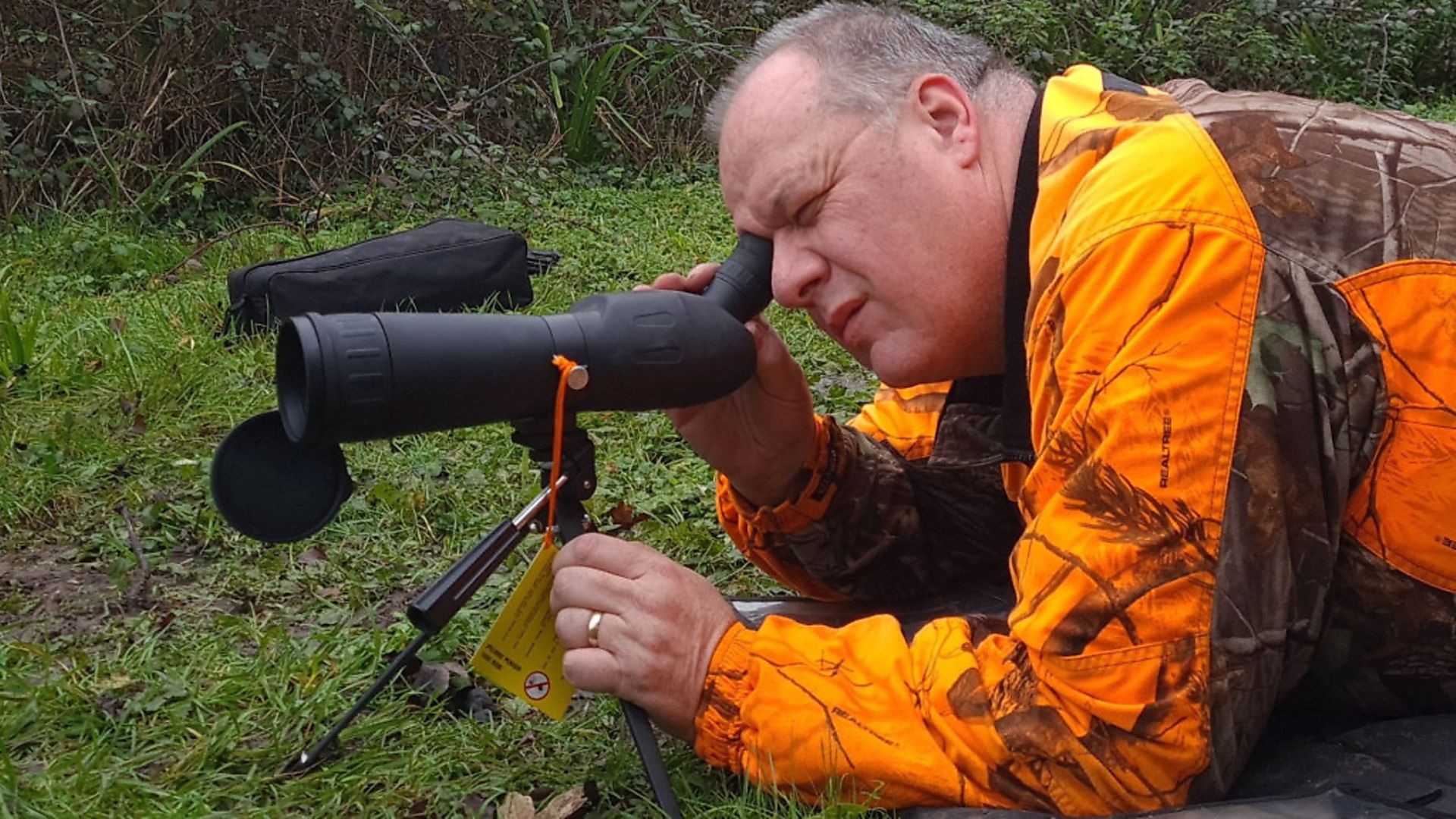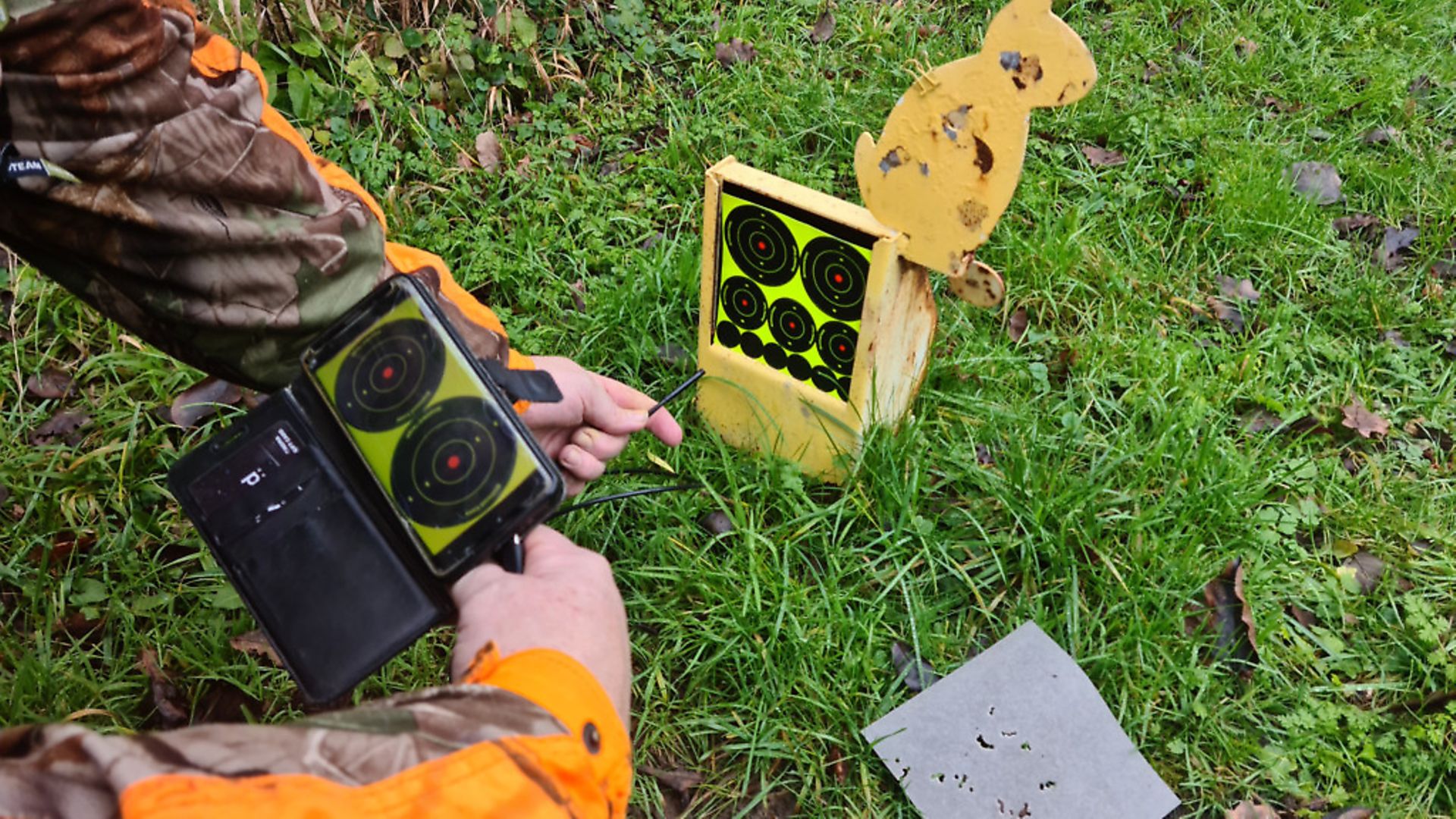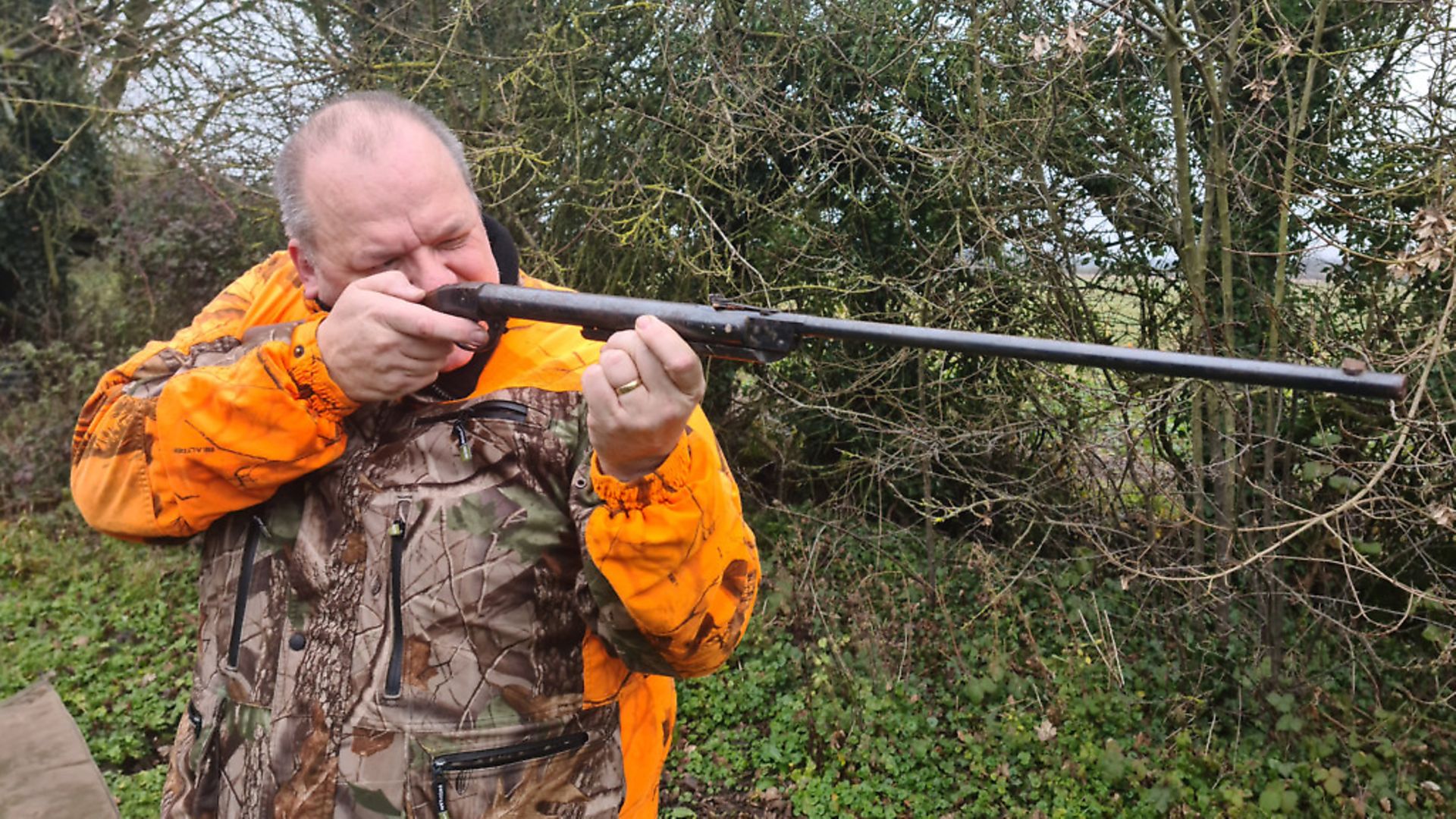Gary Chillingworth shows us how to make our very own, home-made Shoot n See targets. He’s gone all Blue Peter this month!
 credit: Archant
credit: Archant
Good news everyone! Once again, I get to dust off my Blue Peter badge, unbox the sticky-backed plastic and get my full Valerie Singleton on. This month’s article is in answer to a reader’s letter: ‘Like most of us, I have been shooting in the garden quite a lot recently. I have an old springer that isn’t very accurate and I shoot with iron sights. I shoot at paper, but I am struggling to see where the pellet hits. Can you help? Tim’
Well, I could make this a very short article and just say, ‘purchase some Shoot N C targets’. They’ve been around for years and when you shoot them, the black coating comes away and leaves a distinct yellow mark that can easily be seen with the naked eye. You can buy them at most good gun shops and many have developed great on-line stores now – I would strongly recommend you try them out. Yes, there are large online retailers that sell Shoot N C targets, but it’s vitally important that we support our local gun shops, before they disappear.
I am very much aware that a lot of us are on restricted budgets at the moment, though, and we are all shooting in our gardens a lot more than before the lockdowns, so you could easily go through a packet of targets in a day. So, I thought that I would try to make my own Shoot N See targets by recycling some old bits and pieces we have around the house.
 credit: Archant
credit: Archant
One …
I know that this will work because I have used it before and it is very simple. You will need a piece of card in a bright colour – yellow is best, but you can use red or green – a roll of clear packing tape, or just normal Sellotape, and finally a can of matte black spray paint, and a face mask.
Take your yellow card and cover it with clear tape. The reason I suggest clear packing tape is that it’s normally 50mm wide and will cover the card quickly – Sellotape will work, it just take a bit longer. Once the card is completely covered, put your facemask on, take your spray can and cover the tape-covered side with black paint and let it dry completely. Remember, whenever you are using spray paint, shake it well, only use it in a well-ventilated area and read the instructions on the can.
You are using the tape to make a barrier between the card and the paint, and this is because you don’t want the card to soak the paint up.
 credit: Archant
credit: Archant
Two …
Let’s say you only have brown card from a regular cardboard box. In this case, instead of clear tape, purchase some coloured packing tape, place this on the card and then spray as in attempt No.1, and let it dry.
 credit: Archant
credit: Archant
Three …
Take a regular piece of card from a normal box and spray with yellow lining paint – I get mine from Screwfix along with the packing tape – and leave it to dry. Then cover with tape and spray with the black.
 credit: Archant
credit: Archant
Which One Works Best?
I’m going to shoot these with my pre-war Diana springer. It has iron sights and a smooth bore, but is still very accurate, and runs at about 8 ft.lbs. This rifle has been in my family for years and it was a gift from my Aunt Beryl. It used to belong to her husband, Len, and it feels really great to use a family heirloom in an article.
As we can see, the first version works well. You can see the yellow that surrounds the pellet mark clearly, and when you compare it to the shop-bought one, there is a difference, but not very much.
Version two also appears to have worked quite well; you can see the red peeping through, and you can definitely identify the pellet strike, but I think yellow tape would be better.
I’m not too happy with either side of version three. You can certainly see where the pellets have hit, but it is not as defined as the target made from yellow card. All you need to rectify, though, is a can of lining spray to colour them yellow before covering them with tape and black paint, and you will have a long-term supply of Shoot N See targets. I’m going to try some different papers and paints and will come back to you next month with my findings.
Other Options
For those of us who have poor eye sight and are struggling to see pellet strikes, the first option is a good old spotting scope. I have had one of these for many years and on the rare occasions when I am shooting my dioptre rifle, I set this up and after every shot just take a quick look through it to see where I landed. Now, you can spend a fortune on these, but mine was bought from the centre aisle of Lidl, and they do turn up on a fairly regular basis.
If you can’t find one of these, there are a couple of alternatives options that work very well: First, you can buy a cheap scope from eBay. Normally, I would never recommend this because buying a £15 scope with mounts and covers will never end well. They might work for a while, but they will give you trouble eventually, and when you compare them to a rifle scope from a recognised manufacturer that has properly ground and coated lenses, you will certainly see the difference. However, if you get one of these cheap scopes, you now have a spotting scope for just a few pounds.
Medical Intervention
The next option is a favourite trick of mine and I have been using it recently. Once again, go to eBay and purchase an endoscope; these are the small cameras that the medical profession use to look down throats and into the body. They come with a cable, 10, 15 or 20m long, and they just plug into your phone.
They have a fairly fixed depth of field, so when you set them up you will need to place them about six inches away from the target, and in a place where you won’t shoot it. You can then sit back at your shooting area and watch every pellet strike in high definition.
A 20m endoscope costs around £20 and having one is actually very handy. I have used mine for targets, drains, looking inside sofas, and even looking up my nose, but I would never recommend that you do that. I have a confession to make, though, as I was setting up to take the pictures, my beloved dog, Oreo, grabbed my scope off the coffee table and with a crunch, it was gone, so the picture you see is a bit of a mock up, but it is a good representation of what you can do with a cheap endoscope – sorry.
If you have any great ideas for homemade targets, then please drop me a line at: garychillingworth36@gmail.com and I will be happy to get my Valerie on for another article. Finally, if you read the first line of this piece in the voice of Professor Farnsworth, give yourself an extra point. Stay safe – Gary